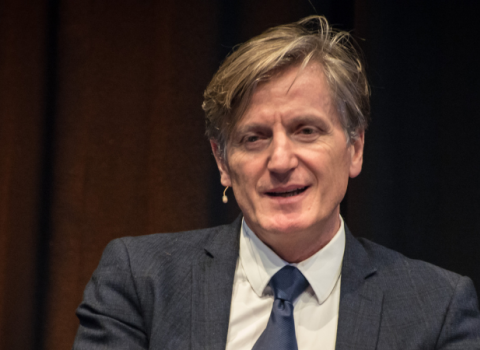There’s just one problem with the idea of a European Institute of Technology – some of the businesses and universities it’s supposed to benefit don’t want it.
Everybody loves a bandwagon – and European politicians are all scrambling to get aboard the latest one in science and technology policy: the creation of a so-called European Institute of Technology. But there’s just one problem: Some of the businesses and universities it’s supposed to benefit don’t want it.
The idea, to create a new European champion in R&D and technology transfer – a European answer to the top-ranked Massachusetts Institute of Technology – has been bubbling in Brussels for years. But the notion got a star-power boost last week when European Commission President Jose Manuel Barroso publicly embraced it as a top priority. His proposal: to create a “virtual” institute, involving collaboration among Europe’s existing universities. It’s on the agenda for next month’s EU summit meeting, and Barroso aides have their fingers crossed.
What is the EIT?
Under the proposal of European Commission President Jose Manuel Barroso, the European Institute of Technology would be a two-level organisation consisting of a central governing body, and a system of knowledge communities based at partner institutions. It would be funded jointly by the public and private sectors, and could be up and running by 2010.
A budget of between €1 billion and €2 billion is foreseen for the institute’s first four years of operation, but the Commission hasn’t pinpointed where this money would come from.
The governing board would comprise leading scientists and people from the world of business and would decide on the strategy and the budget of the EIT and select and evaluate the knowledge communities.
The knowledge communities would bring together departments of universities, companies and research institutes to perform research, education and innovation activities in inter-disciplinary strategic areas.
These departments and their personnel would be seconded to the EIT and thus cease to be part of their home organisations for a period of as much as 15 years. The EIT would have its own legal identity and be independent of national regulation. Strategic research areas would include nanotechnology and information and communication technologies, the Commission said.
“I hope the president gets political support at next month’s summit,” said Alexander Italianer, one of Barroso’s senior aides, adding, “It’s not often that he sticks his neck out, but when he does he usually gets what he wants.”
Certainly, he has no lack of me-too company now. Austrian, Danish and French politicians are all pushing various versions of the idea (and reminding the press of that). The French proposal is particularly grandiose, with plans for up to 3,000 scientists on a 50-hectare site in Saclay, outside Paris – and a mammoth annual budget for public and private research of €600 million to €800 million.
Taking the pledge
It’s not hard to see why politicians want to be identified with the EIT idea from the start. They have all signed up for a pledge to make Europe the most competitive high-tech economy in the world by 2010 – and ideas like the EIT, and a previously approved European Research Council to dole out scientific grants, can help fill the gap. Plus, it’s good politics. If the EIT does happen, and if it boosts Europe’s lacklustre competitiveness in commercialising research, then they will be able to claim some credit.
But some in academia and industry hate the idea – making it by no means a sure bet it will get through the Brussels political machine. Will it follow the same unfortunate route as the community-wide patent; another great idea languishing in gestation for over three decades due to political gridlock? Or will it follow the example of the multi-billion euro Galileo satellite project, which overcame huge political obstacles early on and is now on course for a launch?
Certainly, some of Europe’s existing universities want no part of it. The League of European Research Universities recently issued a statement knocking it. Ian Leslie, pro-vice-chancellor of the University of Cambridge and a member of the Science|Business Advisory Board, fears it may do more harm than good for academia. “The problem is European institutions are not funded properly - so how to solve it? We create a new one [university] that is going to compete for the same pot of money.” And the distributed nature of the “virtual” EIT will make it difficult to manage, he says. With so many institutions participating in the project, “who’s going to be the control and governance?” he asks.
Some companies express polite concern. Jeannet Harpe, spokeswoman for the Dutch electronics group Philips, says: “We are of the opinion that the most effective way is to base [the EIT] on and leverage existing activities in universities, companies and institutes by supporting and better coordinating these activities,” she said. But Harpe didn’t dismiss Barroso’s plan altogether. “This initiative can be a major step to achieve that goal,” she said.
Fear of diversion
In private, other firms say they fear the EIT will simply divert EU money from existing programmes. Just this winter, the EU cleared in principle an ambitious seven-year, €78 billion Framework 7 programme for science and technology – and Brussels lobbyists are working overtime now to get a piece of the pie for their corporate clients. Says a lobbyist for one high-tech multinational: “The view of industry is we have enough [R&D] institutions in Europe already; we don’t need an EIT. Funding is too scarce, and so don’t divert it into another administrative body.”
But EIT proponents say a new public-sector institution is exactly what’s needed. It’s no coincidence, says Barroso aide Italianer, that the most vocal opposition to the EIT plan has come from the UK. and Finland – both places where industry support for academia is already well-established. Academia in many other EU nations needs the EIT help more, he argues – as it will spur more private-sector collaboration there.
“We are trying to set up a research/education /innovation triangle that would be attractive to firms. Looking at the impact on public funding is taking a static view. Our aim is to take a more dynamic view by exploring the potential of the private sector,” he said.
And some companies are making polite noises. Bill Gates, the founder of Microsoft, expressed an interest in the EIT plan when he met Barroso at a conference in Lisbon in January, according to Barroso’s advisors. Microsoft confirmed the conversation the two men had. “Microsoft supports the Commission's focus on university-based research to increase European competitiveness,” it said in a statement.
Barroso did not invent the idea of an EIT. It was first mooted in the mid-1980s by a group of 16 captains of European industry. They called for the creation of a European Institute of Technology that would improve the education of the best engineers and train them to think like pan-Europeans.
Nor is he the only politician in Europe pushing the idea of a new über-university to help the EU become more competitive and innovative.
French planning
While the Commission president was fleshing out his idea for a creating a virtual knowledge community comprising the European Union’s brightest scientists, France’s Strategic Council for Innovation was drawing up detailed plans for the creation of its proposed European Institute of Technology of Paris.
“We think that instead of being known for wine, shows and touristy places, Paris could be seen as one of the most attractive cities for science,” said Philippe Pouletty, head of the council and a science policy adviser to French President Jacques Chirac.
Saclay is already home to major public and private research institutions and elite schools such as IHES, CEA, HEC, Ecole Polytechnique, Supélec and the Faculté d’Orsay. A geographical concentration of top-notch science in an attractive, cosmopolitan location would ensure a steady stream of fresh young scientific minds, “as opposed to places where you find the same people for 30 years doing the same things,” Pouletty said.
Meanwhile in Vienna, Austria’s ministry of education was drawing up plans for a centre of technological excellence there, too. “We have been looking into this for quite a while,” said an Austrian government official, adding that the Austrian idea could become part of the EIT proposed by Mr Barroso.
Similarly, Denmark’s ministry of science has been looking into how Danish higher education establishments could get involved in the EIT plan. “We started to consider this question after Mr Barroso first raised the idea about six months ago, and we support it,” said Holger Rasmussen, a spokesman at the ministry. The Technical University of Denmark situated outside the capital, Copenhagen, is also enthusiastic about the idea, he said. “They see it as a new way to work with technology, with networks focussed on areas of excellence using research teams from different institutions.





 A unique international forum for public research organisations and companies to connect their external engagement with strategic interests around their R&D system.
A unique international forum for public research organisations and companies to connect their external engagement with strategic interests around their R&D system.